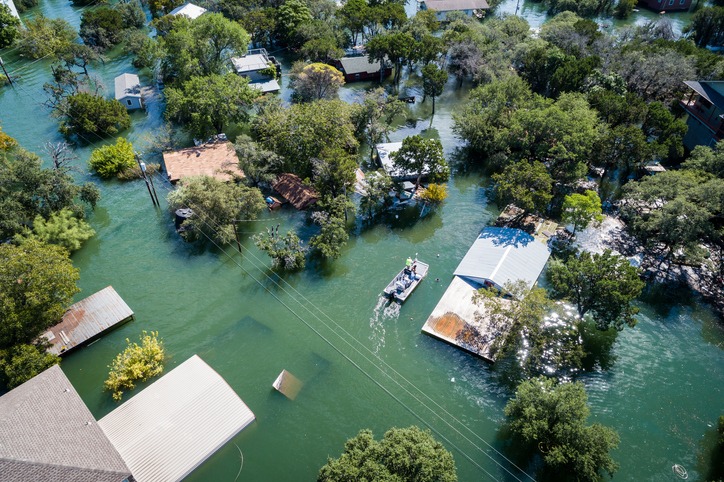The economic impact of natural disasters in the US
For those living in vulnerable areas to extreme weather disasters, recent years have seen some of the worst disasters. In 2024, we have seen severe weather disasters such as, the floods in Afghanistan- Pakistan, typhoon in Japan, the recent hurricane in Florida and more. Now, hurricane Milton is causing severe warnings and evacuations in Florida as they still face the outcome of their last hurricane, Helene.
These disasters cause destruction to lives, families, property and more and the cost of repairing this once they can is substantial. We have taken a dive into the cost to the US economy, businesses and individuals when they are hit by a natural disaster
The cost of weather disasters in the US
Between 2020-2022 there were 60 natural disasters which cost over $1 billion in losses. With the worsening climate change, 2023 saw a record number of weather and climate disasters. In 2023, flooding events alone caused a total of almost $7 billion in damages in the U.S.
The cost of property damage and destruction of infrastructure are often the most clear and immediate impacts, as homes, buildings, roads and more are damaged or destroyed. The economic impact also extends to business interruption, loss of jobs, reduced tourism and more which lead to further financial strain.
The costs of repairing and rebuilding
Hurricane Katrina in 2005 caused an estimated $125 billion in damage, with widespread destruction to property and infrastructure across New Orleans. The storm crippled businesses and left thousands without jobs, contributing to long-term economic stagnation in the region. Housing markets are heavily impacted by property damage. After Hurricane Katrina, housing prices in New Orleans dropped significantly as many properties were either destroyed or made uninhabitable.
Not only did the storm Katrina impact infrastructure but also the essential businesses were halted. Katrina impacted up to 19% of the total US oil production as 24% of the country's natural gas supply is housed in or around areas impacted by the storm. 20 offshore rigs underwent significant damage causing refineries to halt production. This was the first time in the country’s history that the national average gas price went over $3.
Who pays for repairs?
Contributions from the government
Federal as well as local government are often the first to respond after a disaster, they will allocate money for emergency relief and reconstruction. Agencies like FEMA (Federal Emergency Management Agency) provide financial assistance to individuals, municipalities, and states to cover the cost of rebuilding infrastructure and homes. In 2027, the hurricane season brought 3 large disasters, the federal relief packages amounted to $130 billion.
At the state and local levels, additional funds are provided, though these governments often struggle to meet the demands of large-scale recovery due to budget limitations. This has led to calls for increased federal support and better pre-disaster planning.
Insurance Companies
If you are a homeowner and you have property insurance you can file claims to cover damage to homes, cars, and other possessions. Unfortunately, not all areas of the US are equally insured, such as those areas prone to specific types of disasters e.g. hurricanes and wildfires. Insurance premiums have increased the prices due to the heightened risk.
For example, after Hurricane Katrina, insurance premiums in coastal areas of the Gulf and Atlantic soared by as much as 20-30% in some regions.
Some homeowners may not be able to afford sufficient coverage, leaving them vulnerable to significant financial losses after a disaster. Additionally, many policies don’t cover flooding unless a separate policy is purchased, as seen in the extensive uninsured losses from Hurricane Harvey, where only about 20% of homeowners in the Houston area had flood insurance.
The impact on small businesses
A 2017 FEMA report highlighted that 40% of small businesses never reopen after a disaster. In these cases, both individuals and businesses are forced to rely on personal savings, loans, or government assistance, which may not be sufficient to cover the full extent of the damage.
Some of the hidden costs of weather disasters
Employment: Natural disasters can have various effects on the economy of the local area which ripple through multiple sectors. With productivity down, businesses begin to struggle and even more so if their property has been damaged or destroyed. The money to restore the business may not be immediately available, causing the owners and all staff to be without employment for a prolonged amount of time.
Housing market: When disasters hit, and if the area has been hit multiple times, it is likely to deter future residents. Currently, Florida is facing its second large hurricane within a month, this will likely persuade many to relocate and others to delay or cancel their move into the area. This will have a substantial impact on the housing market.
Investments: For investors, an area prone to natural disasters will likely deter any development in the area. This can include property investment as well as developing the area with more businesses.














